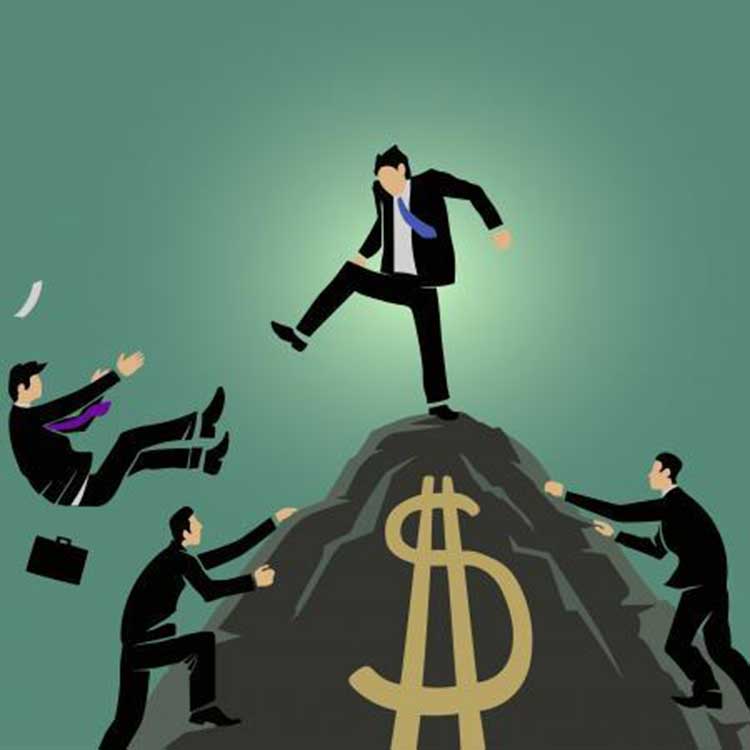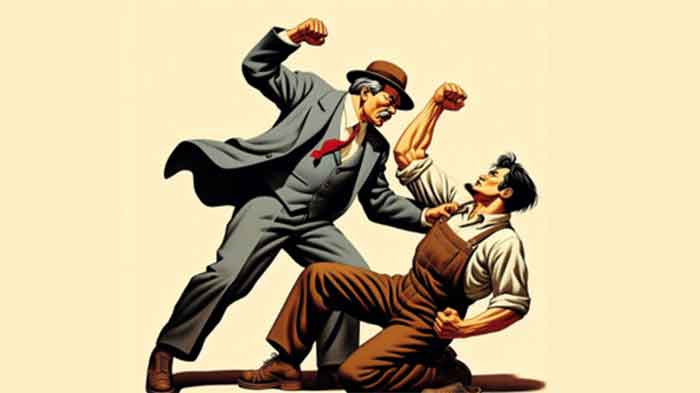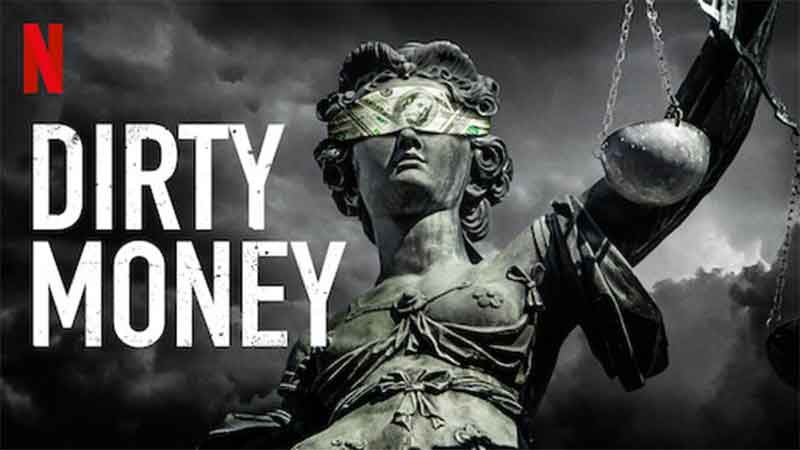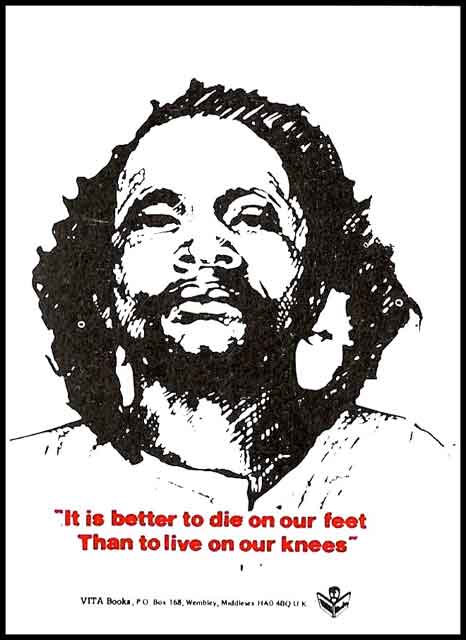
The title is a riff on James Carville’s disingenuous (and stupid) phrase from 1992 when he was Bill Clinton’s campaign director. Carville’s pithy quip, “It’s the economy, stupid,” became the campaign’s de facto slogan. It functioned as a clever ruse to help Clinton beat Bush by pandering to workers and creating the impression that his policies would actually help them. In retrospect,
Carville’s line would have been more revealing (and truthful) if he’d substituted the word “markets” for “economy” but that would have given too much away in terms of undermining one of capitalism’s legitimizing myths. And even at that level of candor it would, as we’ll see, have concealed more than it conveyed about concentrated wealth and power. I’m suggesting that further distillation of these sometimes confusing terms, combined with the reactions to and consequences of the Covid-19 pandemic, will reveal the dynamics of our current situation.
The Pandemic and Unemployment
We know the Covid-19 pandemic is the cause of massive and growing unemployment. The latter, in turn, is the causal link to a host of other problems, including, at least: Unconscionable food insecurities, exhaustion of meager savings, inability to make mortgage, rent and car payments, increasing domestic violence, depression, suicide, delays in paying medical bills, avoiding preventive health care and the loss of both dignity and agency.
On May 8, both the mainstream and left media reported 20 million unemployed and an unemployment rate of 14.7% but both severely under-reported the actual numbers. Economist Jack Rasmus, after carefully accounting for all those left out (omission of contingent workers, partial data from April, workers who’ve given up looking, dropouts, non-citizen immigrants and anyone who must now care for dependents) arrives at a real unemployment rate of at least 25% and the number of jobless between 35-40 million with 47 million projected by the end of June. [1] And the situation is particularly bad for those between ages sixteen and twenty-four for whom the April rate was 27.4 and is certain to climb. Finally, according to Working Paper from the University of Chicago, of recent layoffs, 42% will result in permanent job loss. [2]
Don’t Mistake the Markets for the Economy
Owing in part to lessons supposedly learned from the Great Crash, many Americans reflexively assume that if “the markets” are doing better or at least okay, the “economy” will eventually pick up and at least the middle class will experience better days. Black Thursday, October 24, 1929 signaled the beginning of the Wall Street crash and the start of the Great Depression. It was the rapid decline of profitability for blue chip stocks that foreshadowed the end of the Boom Years. But what about today?
Perhaps unbeknownst to many, the “markets” are up 25 percent since March 23rd. Broken down further, the tech-heavy Nasdaq is up 2% but its 100 strictly-tech sector is up 29%. The S&P 500 tech component jumped 26% while the rest of the index went down 9% and tech companies in the DOW are up 25%.
As a recent piece in the business section of The New York Times made clear, the stock market has almost nothing to with the economy of Main Street or for that matter, the Covid-19 pandemic. Putting it in succinct and stark terms, “Economists who have studied the performance of stock markets over time say there’s relatively little evidence that the economy matters to the outcome of the market.” [3] One consequence is that not everyone is suffering. April’s data showed, that the wealth of our 630 billionaires increased by $406 billion to a total of $3.4 trillion. [4] In part, this is the direct result of government tax breaks and Federal Reserve bailouts of $734.79 billion to Wall Street.
The major indices for stocks include the Dow Jones Industrials (30 blue-chip, well established companies representing their respective industries); the S&P 500 (large companies deriving 40 percent of their revenues from abroad.) These companies in the S&P change frequently, must report four consecutive years of profitability and have a market value of $8.2 billion. Finally, we have the tech-heavy Nasdaq, founded in 1971, where all trades are electronic. The FAANG —Facebook, Apple, Amazon, Netflix and Alphabet (formerly Google) are all on the Nasdaq and are market weighted giving them a larger sway on the indexe’s day-to-day fluctuations. Further, in addition to multiple other advantages accruing to size, the FAANG sits on enormous piles of cash, making it largely immune from the perils of the pandemic and able to survive for the long haul.
The demarcation line dividing the tech giants from Main Street and the rest of the market is even more pronounced. The five largest companies in the S&P 500 — Microsoft, Amazon, Apple, Alphabet (Google) and Facebook — are up 10 percent this year while the other 495 are down 13 percent. Three of them, Amazon, Microsoft and Apple are worth $1 trillion each and represent one-fifth of the value of the index. It wouldn’t be incorrect to conclude that these behemoths are a distinctly different kettle of fish and in fact, comprise the actual “market.”
Rival Factions
Another factor that bears on our understanding of the current situation needs to be mentioned. We know that all millionaires and billionaires within the ruling class agree on the imperative of preserving the capitalist system at all costs. But, within that overriding consensus, serious disagreements and rivalries can occur and one occurring now is the issue of “Reopening America.” For example, CEOs of companies involved in fracking and drilling and economic entities like NASCAR, Home Depot, Walmart, Sam’s Club, Amway, Hobby Lobby and others facing financial ruin are doing all they can to end the lockdown and force people back to work. “Re-opening America,” cloaked in a smokescreen about patriotism, “freedom” and concern for small businesses, is their means of ramping up enraged protesters. In the words of political analyst and activist Caleb Maupin,
The people responsible for the right wing mobilizations are a coalition of millionaires and billionaires who feel like they are locked out by the ultra-rich. This is the coalition that took Trump to the White House in 2016. Amidst the pandemic, these lower levels of American capital are watching the blood rush from their financial wounds. [5]
The second and even richer faction of the ruling class includes the Big Four major oil companies (eager to see the small frackers and drillers driven out of business by low gas prices), CEOs of the aforementioned tech giants (Amazon is at an all-time high), (CNN ratings up 193 percent, FOX 89 percent, and MSNBC 56 percent), and of course “old money” elites are all immune from being forced out of business. Except for vanquishing competitors they are as indifferent to pandemic suffering and death as their less wealthy rivals. They will emerge more powerful and dominant in the post pandemic era and high tech firms are poised to reap huge profits from public-private ventures in tele-health services and in what author Naomi Klein called “disaster capitalism,” they envision dismantling and privatizing public education.[6]
Stock Ownership
The foregoing facts expose some damning truths but apologists for capitalism will claim that despite some flaws, America’s saving grace is that we are a “shareholder democracy” by virtue of widespread stock ownership.
While it’s true that a bare majority of Americans own stock today (According to Gallup, 54 percent, down from 62 percent in 2008), either directly or indirectly as part of a fund, the wealthiest 10% of American households own a whopping 84% of all stock. [7] According to the Federal Reserve, in 2020, the top 1 percent of households own 38% of all stock shares, amounting to an average of $969,000 in stock holdings.
Now, of that 54 percent with some money in the stock market, half have less than $40,000 invested (Washington Post, 8/22/2018). Further, 38% of Americans have less than $1,000 in savings and 32 percent have no savings at all. As such, it’s a convenient myth that owning stock means that more of our fellow citizens receive a share of a growing pie. In truth, the day-to-day ups and mostly downs in the stock market have minimal effect on the lives of most Americans.
Conclusion
Whereas social production creates all wealth and produces all surplus value, workers (including “essential” ones) are viewed as expendable pawns by the plutocratic parasites who prey on them. Whereas, the working class has no ownership stake in the country and that workers are forced to choose between potential death sentences or to be ineligible for unemployment benefits. Whereas Democrats join the GOP in voting for Orwellian surveillance measures, many liberal and “progressives” immediately sold out to unconditionally back the “Lesser Evil” Joe Biden. Whereas the neoliberal, duopoly tag-team is in bed with oligarchs. Whereas there is unceasing murder and incarceration of black citizens and the unfreedom of our so-called Democratic institutions is transparent. Whereas crushing austerity continues while the empire gorges itself on monies that could easily satisfy basic human needs. And, Whereas the future will only get worse, only one question remains: Why should we concede a scintilla of legitimacy to a system owned by psychopaths and administered by their willing executioners?
[1] ] Jack Rasmus, “Low-Balling the Unemployed in the Era of the 2020 Great Recession,” Counterpunch, May 13, 2020; and see, David Blanchflower, “The Pandemic Jobless Youthquake, The New York Review, May 6, 2020.
[2] Jose Maria Barrero, Nick Bloom, and Steven J. David, Working Paper No 2020-59 Covid-19 Is Also a Reallocation Shock (May 2020).
[3] Matt Phillips, “Repeat After Me: The Markets Are Not the Economy,” The New York Times, May 15, 2020.
[4] Lawrence Wittner, “Amid the Coronavirus Pandemic, America’s Billionaires Thrive and Prosper,” Counterpunch, May 11, 2020.
[5] This discussion draws upon Caleb Maupin, “Pandemic Intensifies Divisions Among US Elite,” The Greanville Post, May 9, 2020.
[6] Katie Ferrari, “Disaster Capitalism Is Coming to Public Education,” Jacobin, 5/4/2020.
[7] Radical economist Edward N. Wolff is the most reliable source of stock ownership. See, his “Household Wealth Tracked in the United States, 1962 to 2016: Has the Middle Class Recovered?” November 2017.
Gary Olson, Ph.D is Professor Emeritus of Political Science, Moravian College, Bethlehem, PA. His most recent book is EMPATHY IMPERILED: Capitalism, Culture and the Brain (New York: Springer Publishers, 2012). Contact: [email protected]
SIGN UP FOR COUNTERCURRENTS DAILY NEWS LETTER















































